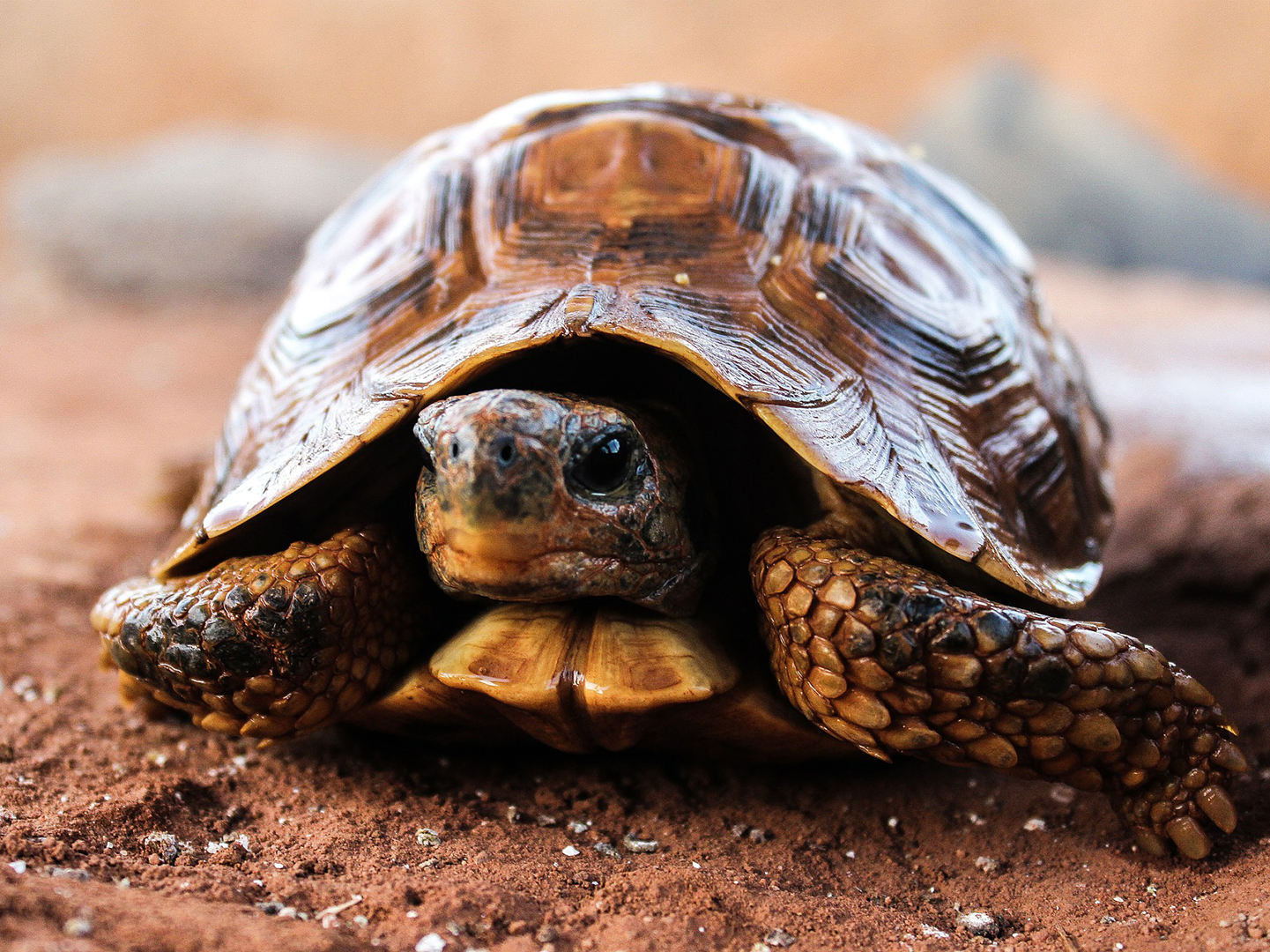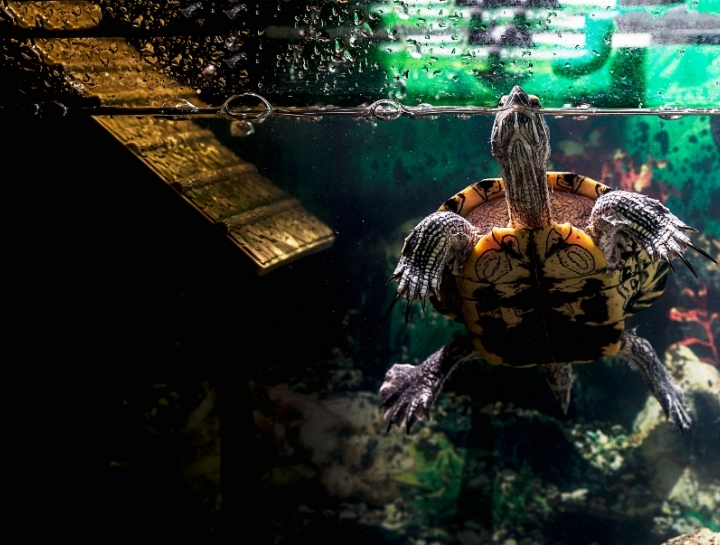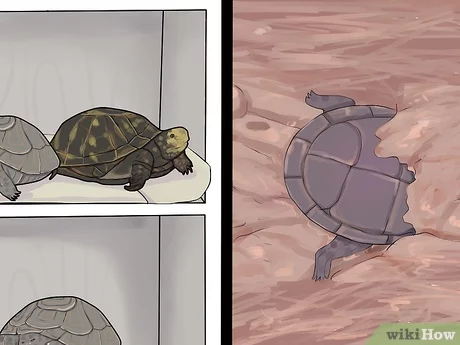A hibernating turtle will be inactive and buried in substrate. Its breathing slows down significantly.
Hibernation is a natural process for many turtles, especially during colder months. Recognizing hibernation signs can ensure your pet’s health and safety. Turtles typically become less active and may bury themselves to regulate body temperature. Their metabolism slows, and they may eat little to nothing.
Providing a proper environment is crucial for their well-being during this period. Ensure the temperature and humidity levels mimic their natural habitat. Regularly check on your turtle to confirm it is hibernating and not ill. Understanding these signs helps maintain a healthy turtle during hibernation. Always consult a vet if unsure about your turtle’s behavior.
Identifying Turtle Hibernation
Noticing your turtle’s behavior can help determine if it is hibernating. Recognizing the signs early ensures you provide the right care.
Physical Signs Of Hibernation
Observe your turtle’s physical state to identify hibernation. Here are some key indicators:
- Reduced Activity: The turtle becomes less active and moves less.
- Sunken Eyes: The eyes may look slightly sunken.
- Cooler Shell: The shell feels cooler to the touch.
- Weight Loss: A minor weight loss can occur.
Behavioral Changes Preceding Hibernation
Before hibernation, turtles often show specific behaviors. Noting these changes can help you prepare:
- Decreased Appetite: Turtles eat less or stop eating.
- Burrowing: They dig into the substrate more frequently.
- Less Swimming: Aquatic turtles swim less often.
- Seeking Shelter: They look for hidden or darker spots.
Understanding these signs helps you care for your hibernating turtle. Make sure to monitor their environment and health closely.

Turtle Hibernation Explained
Turtle hibernation, also known as brumation, is crucial for their survival. Understanding this process helps you ensure your turtle’s health during the colder months.
What Happens During Hibernation?
During hibernation, your turtle’s metabolism slows down significantly. This means they will eat less and move less. The turtle’s heartbeat and breathing rates also decrease. They usually bury themselves in mud or sand to stay warm.
Here’s a quick overview of the changes:
- Slowed metabolism
- Reduced food intake
- Decreased movement
- Lower heartbeat and breathing rates
Why Turtles Hibernate
Turtles hibernate to survive the winter months. Cold temperatures make food scarce. Hibernation helps conserve energy. This process also protects them from predators as they hide in the mud or sand.
Reasons for hibernation include:
- Cold temperatures
- Scarcity of food
- Energy conservation
- Protection from predators
Here’s a table summarizing the key points:
| Reason | Description |
|---|---|
| Cold temperatures | Helps turtles survive the winter |
| Scarcity of food | Less food available during winter |
| Energy conservation | Slows metabolism to save energy |
| Protection from predators | Buried in mud or sand for safety |
Environmental Triggers For Hibernation
Understanding the environmental triggers for hibernation is crucial for turtle owners. Turtles respond to changes in their surroundings. These changes signal that it’s time to hibernate. Knowing these triggers helps ensure your turtle’s health.
Temperature And Light Cycles
Temperature and light cycles play a major role in turtle hibernation. As temperatures drop, turtles prepare for hibernation. They need cooler temperatures to start the hibernation process. Ideal temperatures for hibernation range between 40°F to 50°F.
Light cycles also impact hibernation. Shorter daylight hours signal turtles to hibernate. Turtles sense the change in light and adjust their behavior. Ensure your turtle’s environment mimics these natural changes.
Natural Habitat Vs. Captivity
In the wild, turtles have natural cues for hibernation. They experience seasonal changes directly. Captive turtles need a similar environment. Replicating these conditions in captivity can be challenging.
Here is a comparison table to help:
| Natural Habitat | Captivity |
|---|---|
| Seasonal temperature drops | Controlled temperature settings |
| Natural light cycles | Artificial light schedules |
| Access to natural burrows | Man-made hibernation spaces |
Replicating these conditions requires effort. It ensures your turtle stays healthy through hibernation.
In summary, focus on temperature and light cycles. Ensure your captive turtle experiences similar changes. This helps in recognizing if your turtle is hibernating.
Preparing For Hibernation
Preparing your turtle for hibernation is crucial. It ensures their health and safety. This guide will help you make the right adjustments. We’ll discuss diet changes and creating a suitable environment.
Diet Adjustments
Before hibernation, your turtle’s diet needs changes. Increase their intake of leafy greens. These include kale and collard greens. Offer more high-fiber vegetables like carrots and squash. Avoid feeding them protein-rich foods. This includes insects and meats. Clean their water regularly to keep it fresh. Ensure they have access to calcium supplements. These can be in the form of cuttlebone or calcium blocks. Here’s a simple diet plan:
| Week | Food Type | Frequency |
|---|---|---|
| 1-2 | Leafy Greens | Daily |
| 3-4 | High-fiber Vegetables | Every Other Day |
| 5-6 | Calcium Supplements | Twice a Week |
Creating A Suitable Hibernation Environment
Set up a safe hibernation spot for your turtle. Choose a quiet, dark, and cool place. A basement or garage can work well. Ensure the temperature stays between 40-50°F (4-10°C). Use a thermometer to monitor the temperature. Provide a box filled with soil or shredded paper. This should be deep enough for your turtle to burrow. Ensure the area is free from predators and rodents. Keep the hibernation box slightly moist. This helps prevent dehydration.
Below is a checklist for setting up the hibernation environment:
- Quiet and dark location
- Temperature between 40-50°F (4-10°C)
- Soil or shredded paper for burrowing
- Moisture control
- Protection from predators
Regularly check on your hibernating turtle. Ensure they remain safe and undisturbed.
Monitoring A Hibernating Turtle
Monitoring your turtle during hibernation is crucial for its health. You need to ensure your turtle stays safe and healthy. Regular checks can help you spot any problems early. Below are key aspects to consider while monitoring your hibernating turtle.
Frequency Of Checks
Check your hibernating turtle at least once a week. Frequent checks help ensure your turtle is safe. Use a gentle approach to avoid disturbing its rest. Look for signs of dehydration or weight loss. If the turtle seems too light, it may need intervention.
Signs Of Complications
Watch for any signs of complications. Common issues include:
- Weight loss
- Dehydration
- Respiratory issues
- Unusual behavior
Weight loss can indicate a problem. Weigh your turtle weekly and note any changes. Dehydration is another serious issue. Check its skin and eyes for signs of dryness. Respiratory issues may include wheezing or mucus. Unusual behavior, such as frequent movement, can also signal a problem.
| Complication | Signs to Watch For |
|---|---|
| Weight Loss | Significant drop in weight |
| Dehydration | Dry skin, sunken eyes |
| Respiratory Issues | Wheezing, mucus |
| Unusual Behavior | Frequent movement |
If you notice any of these signs, take action immediately. Consult a vet for proper guidance and care. Your turtle’s health depends on your vigilance during hibernation.
Duration Of Turtle Hibernation
Understanding the duration of turtle hibernation is essential for turtle owners. This period can vary based on several factors. Knowing these can help you care for your turtle better.
Average Timelines
The average hibernation period for turtles ranges from 2 to 4 months. Some species may hibernate for only a few weeks. Others might hibernate for up to 6 months.
| Species | Average Hibernation Duration |
|---|---|
| Box Turtle | 2-3 months |
| Pond Turtle | 3-4 months |
| Tortoise | 4-6 months |
Factors Influencing Hibernation Length
Several factors influence the hibernation length of turtles. These include:
- Species: Different species have different hibernation needs.
- Age: Younger turtles may hibernate for shorter periods.
- Health: Healthy turtles can hibernate longer.
- Environment: Temperature and light affect hibernation duration.
- Diet: Proper nutrition before hibernation ensures a longer rest.
Ensuring the right conditions helps your turtle hibernate safely and comfortably.
Post-hibernation Care
After hibernation, your turtle needs special care to ensure it wakes up healthy. This post-hibernation period is crucial for your turtle’s health and well-being.
Waking Your Turtle Up
Gradually increase the temperature in your turtle’s habitat. Use a basking lamp to provide warmth. Ensure the water temperature is comfortable. A gentle increase helps your turtle wake up slowly and safely.
Offer fresh water and food. Start with small amounts. Your turtle’s appetite will increase over time. Monitor its eating habits closely.
Health Assessment Post-hibernation
Once your turtle is awake, check its health. Look for any signs of illness or injury. Common issues include:
- Weight loss
- Dehydration
- Respiratory issues
If you notice any problems, consult a vet immediately. It’s important to address health issues early.
Also, check your turtle’s shell. Ensure there are no cracks or soft spots. A healthy shell is crucial for your turtle’s protection.
Keep a close eye on your turtle for a few weeks. Ensure it is eating, drinking, and moving normally. Regular monitoring will help you catch any issues early.

Common Misconceptions About Turtle Hibernation
Understanding if your turtle is hibernating can be confusing. Misconceptions often lead to worry. Clarifying these myths helps ensure your turtle’s health.
Hibernation Vs. Brumation
Many confuse hibernation and brumation. They are not the same. Hibernation occurs in warm-blooded animals. Brumation happens in reptiles, including turtles.
During brumation, turtles slow down but remain alert. They may still drink water occasionally. Hibernation, on the other hand, involves a deep sleep.
Recognizing these differences is crucial. It helps in providing the right care for your turtle.
Myths Debunked
Several myths surround turtle hibernation. Let’s debunk some of them:
- Myth: All turtles hibernate.
- Fact: Not all turtles hibernate. Only certain species do.
- Myth: Hibernating turtles do not need water.
- Fact: Turtles in brumation may still need water. They can dehydrate otherwise.
- Myth: A hibernating turtle is dead if it doesn’t move.
- Fact: Turtles in brumation move very little. They can appear lifeless but are not dead.
Understanding these myths helps in avoiding unnecessary panic. It ensures your turtle gets the care it needs during brumation.

Frequently Asked Questions
What Does Turtle Hibernation Look Like?
Turtle hibernation involves burying themselves in mud or soil to conserve energy. They become inactive and slow their metabolism.
How Do You Get A Turtle Out Of Hibernation?
Gradually warm the turtle by increasing the temperature over several days. Ensure proper hydration and offer food.
What Happens If You Wake A Hibernating Turtle?
Waking a hibernating turtle can stress it and disrupt its natural cycle. This may lead to health issues. Always let turtles hibernate undisturbed.
Can Indoor Turtles Hibernate?
Yes, indoor turtles can hibernate. Ensure their environment mimics natural conditions, with cooler temperatures and reduced light. Proper care is essential.
Conclusion
Recognizing turtle hibernation signs is crucial for its health. Look for reduced activity and eating. Maintain proper environmental conditions. Consult a vet if unsure about your turtle’s behavior. Understanding these signs ensures your turtle’s well-being during hibernation. Keep a close watch and provide necessary care for a healthy hibernation period.





Leave a Reply